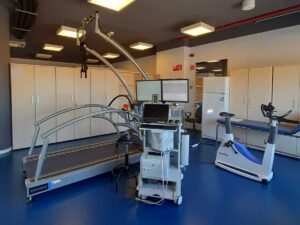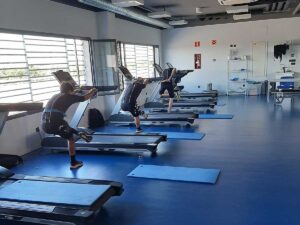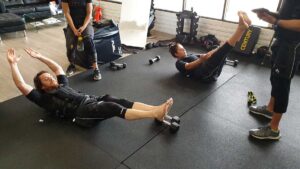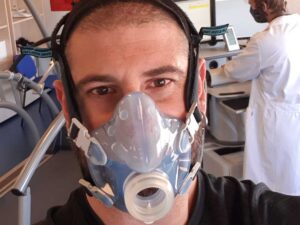Introduction
WB-EMS improves muscle strength in elite soccer players (Filipovic et al., 2016), in postmenopausal women (Kemmler et al., 2010) and in healthy middle-aged men without training (Kemmler et al., 2016).
Method
Fifteen healthy male recreational runners were recruited, who had been running 2-3 times a week and had no previous experience with WB-EMS. Three participants did not complete the study (due to work and family reasons) and were excluded from the additional analysis (total number 12 runners).
The WB-EMS training program consisted of six sessions (1 per week). Before starting the program, participants held a familiarization session to learn movement patterns and adapt to electrical stimuli.
The 12 runners were divided into two groups: Functionalized and periodized career training group with WB-EMS (PFG) (n = 6) and traditional training group with WB-EMS (TG) (N = 6).
Functionalized and periodized career training group with WB-EMS (PGF) (n = 6)
The training sessions were divided into four parts (participants only made movements when receiving electrical impulse in all cases):
- Warm-up (W).
- Strength workout (S).
- High intensity interval power training (HP).
- High intensity interval training (HT).
The electrical parameters, except the pulse intensity, were modified in different parts of the session.
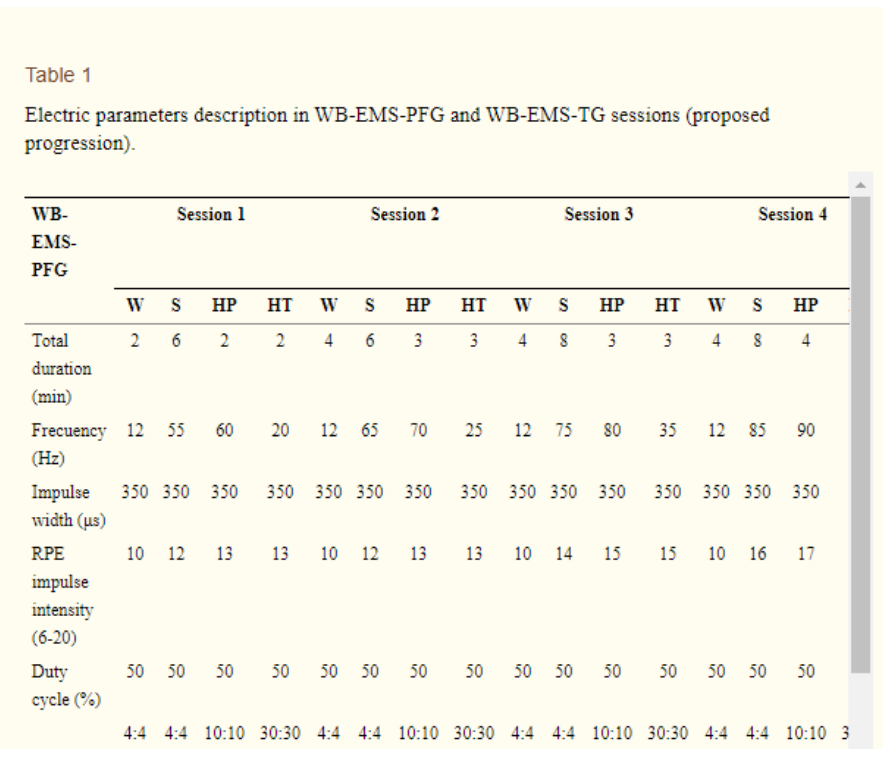
Traditional training group with WB-EMS (TG) (n = 6).
The TG program consisted of training interventions applied in previous WB-EMS studies (Kemmler et al., 2010, 2012, 2014, 2016; Kemmler and von Stengel, 2013). Electric impulse and training load increased throughout the program. Pulse intensity was individually adjusted by RPE (Borg, 1982) every 2 minutes during all sessions. The sessions were structured in a circuit format and consisted of 10 dynamic and general exercises without external load.
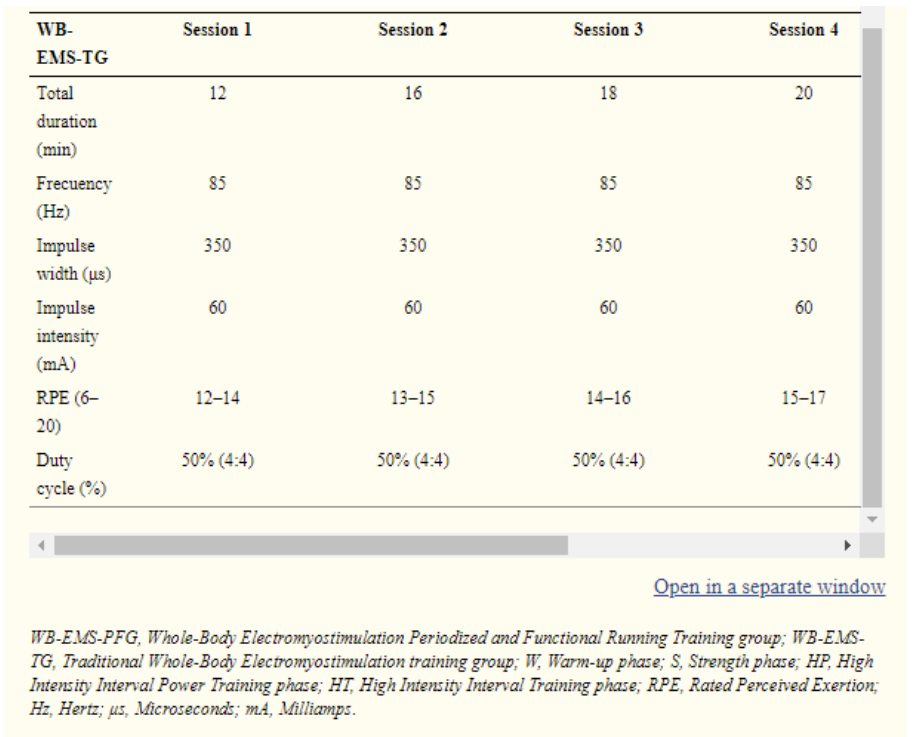
- Amaro-Gahete FJ., De-la-OA., Sanchez-Delgado G., Robles-Gonzalez L., Jurado-Fasoli L., Ruiz JR., y Gutiérrez A. (2018) Functional Exercise Training and Undulating Periodization Enhances the Effect of Whole-Body Electromyostimulation Training on Running Performance. Front Physiol, 9 (720).
- Filipovic, A., Grau, M., Kleinöder, H., Zimmer, P., Hollmann, W., and Bloch, W. (2016). Effects of a whole-body electrostimulation program on strength, sprinting, jumping, and kicking capacity in elite soccer players. J. Sports Sci. Med. 15, 639–648.
- Kemmler, W., Schliffka, R., Mayhew, J. L., and von Stengel, S., et al. (2010). Effects of whole-body electromyostimulation on resting metabolic rate, body composition, and maximum strength in postmenopausal women: the training and electrostimulation trial. J. Strength Cond. Res. 24, 1880–1887. doi: 10.1519/JSC.0b013e3181ddaeee.
- Kemmler, W., Von Stengel, S., Schwarz, J., and Mayhew, J. L. (2012). Effect of whole-body electromyostimulation on energy expenditure during exercise. J. Strength Cond. Res. 26, 240–245. doi: 10.1519/JSC.0b013e31821a3a11.
- Kemmler, W., Bebenek, M., Engelke, K., and von Stengel, S. (2014). Impact of whole-body electromyostimulation on body composition in elderly women at risk for sarcopenia: the training and electrostimulation trial (TEST-III). Age 36, 395–406. doi: 10.1007/s11357-013-9575-2.
- Kemmler, W., Teschler, M., Weißenfels, A., Bebenek, M., Fröhlich, M., Kohl, M., et al. (2016). Effects of whole-body electromyostimulation versus high-intensity resistance exercise on body composition and strength: a randomized controlled study. Evid. Based Complement. Altern. Med. 3, 44–55. doi: 10.1155/2016/9236809.


